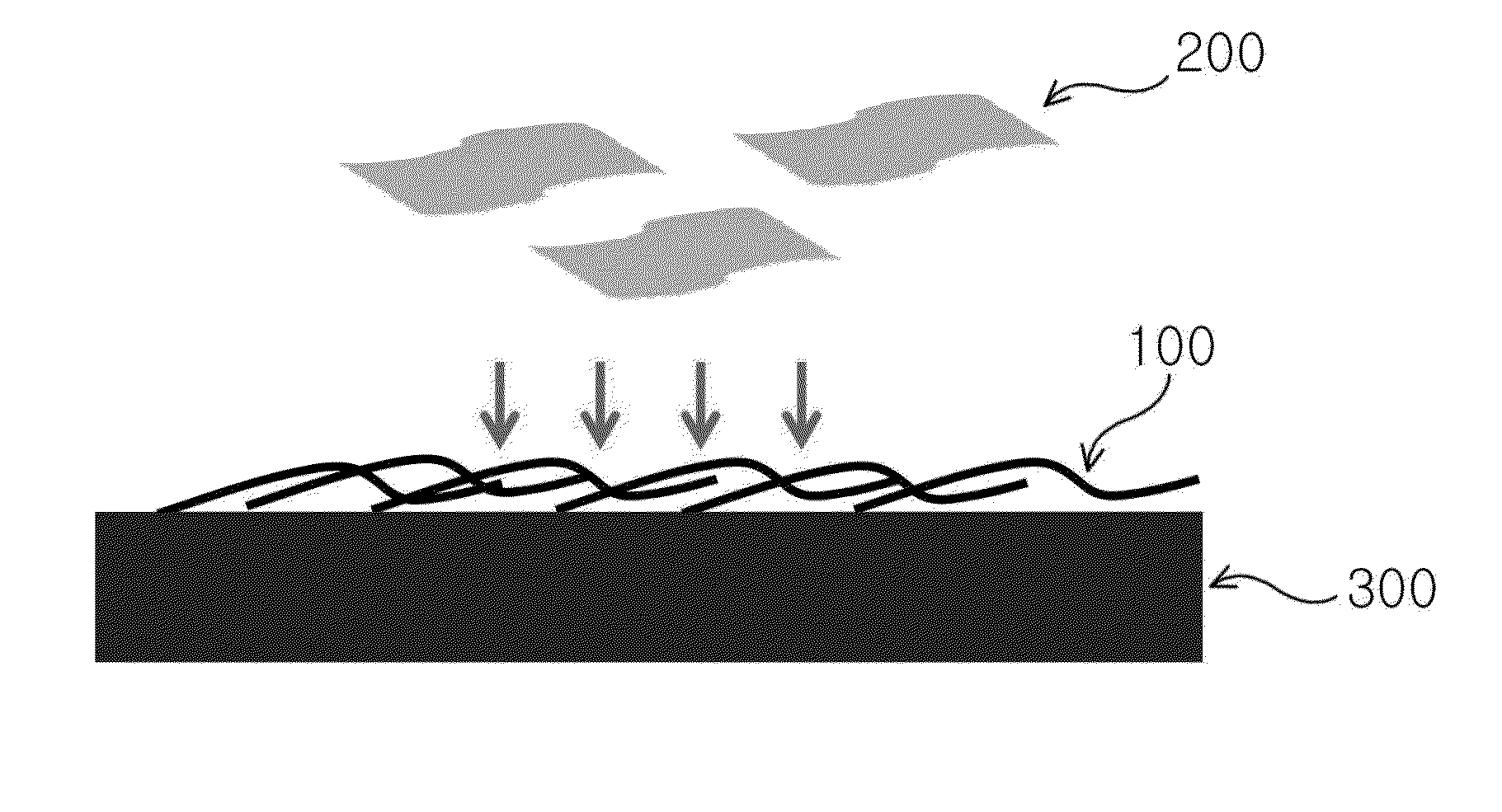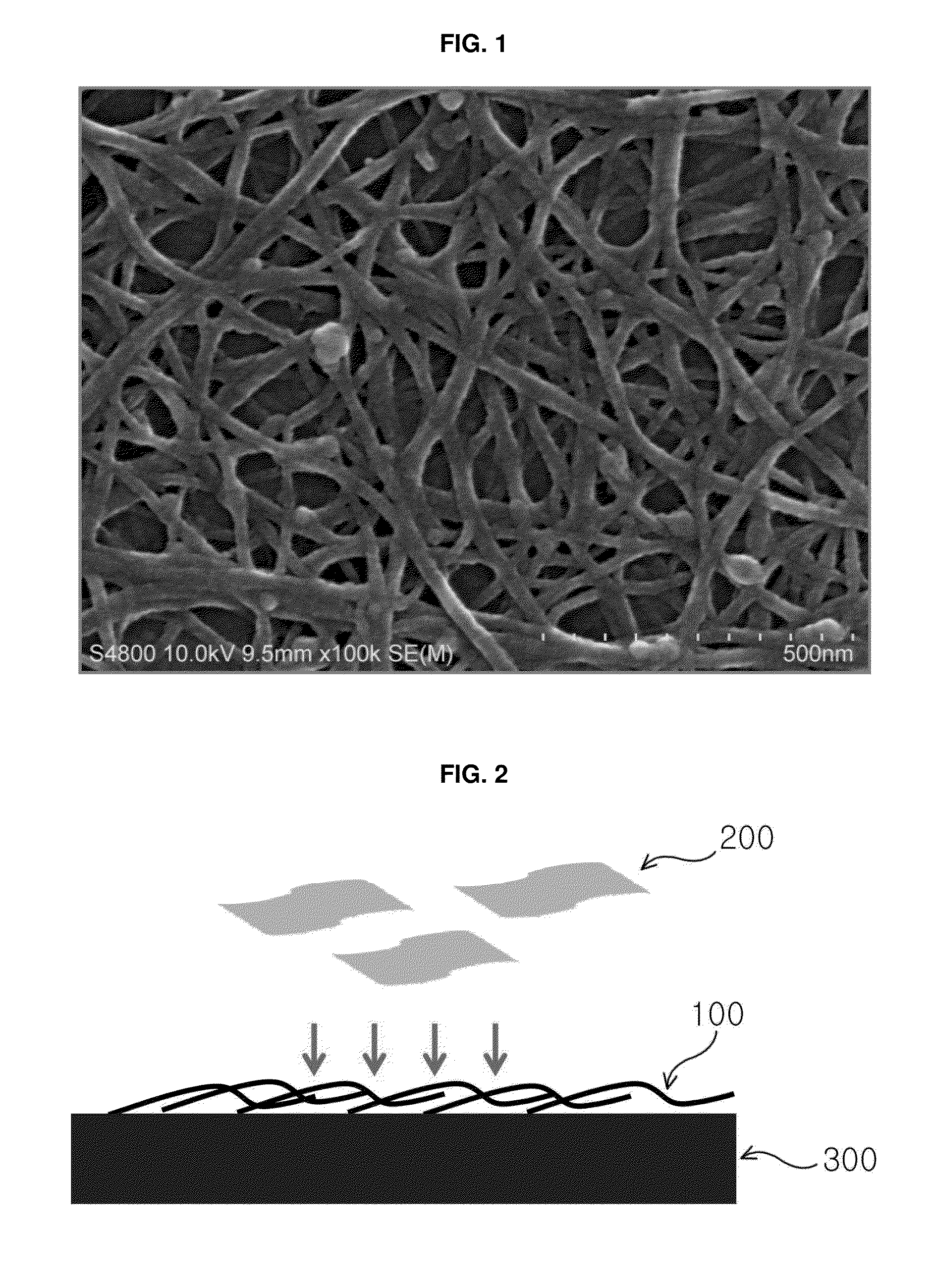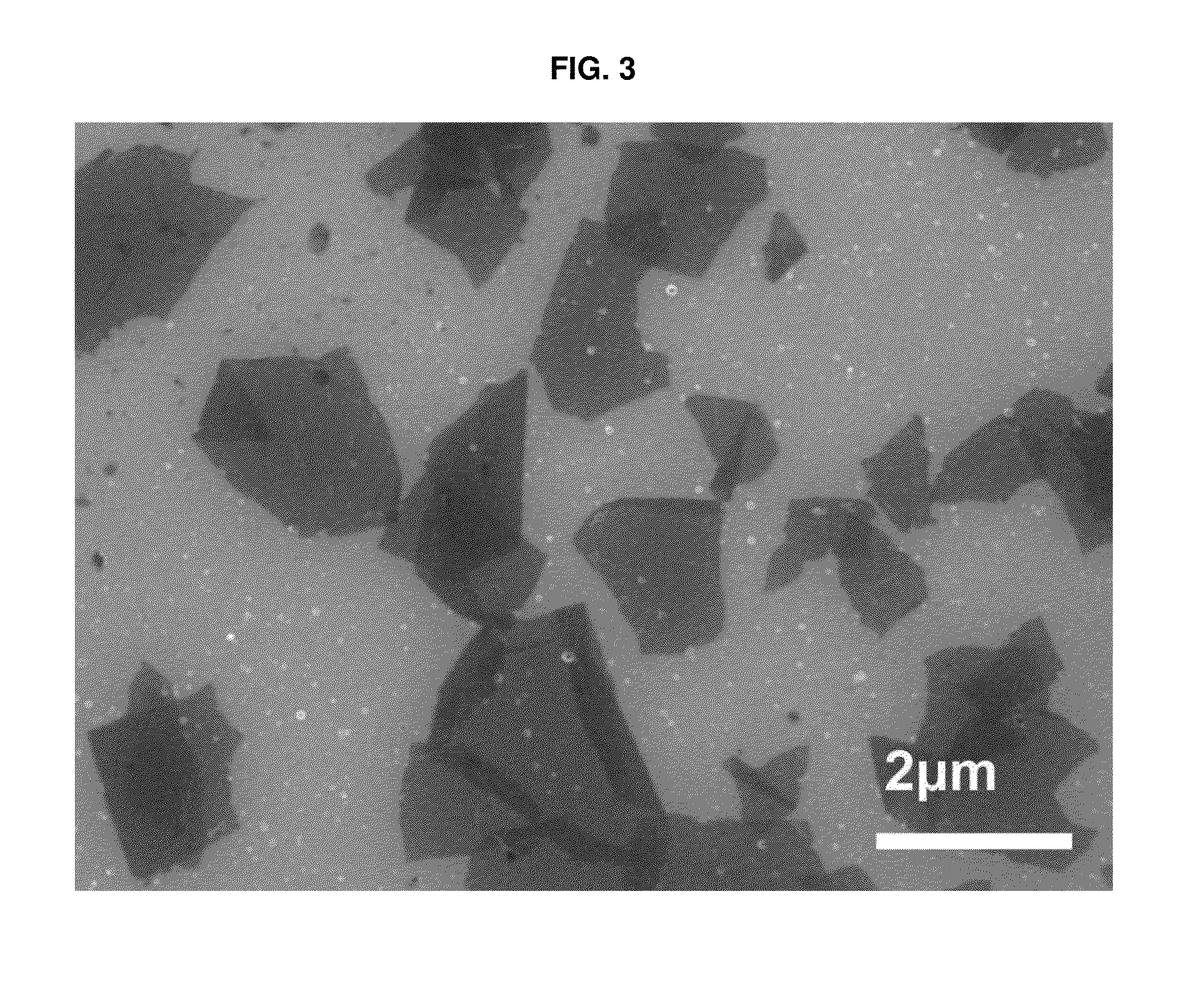One-dimensional conductive nanomaterial-based conductive film having the conductivity thereof enhanced by a two-dimensional nanomaterial
a technology of conductive nanomaterials and conductive films, which is applied in the direction of conductive layers on insulating supports, applications, conductors, etc., can solve the problems of unstable supply and demand of indium oxide (in2o3), high production costs, and deterioration of electrical conductivity of indium oxide, so as to enhance the conductivity of one-dimensional conductive nanomaterial films
- Summary
- Abstract
- Description
- Claims
- Application Information
AI Technical Summary
Benefits of technology
Problems solved by technology
Method used
Image
Examples
first embodiment
[0033]First, a one-dimensional conductive nanomaterial layer will be described.
[0034]The one-dimensional conductive nanomaterial layer is formed on a plastic substrate using a one-dimensional conductive nanomaterial. In this embodiment, as the substrate, a polyethylene terephthalate substrate is used. Further, as the one-dimensional conductive nanomaterial, carbon nanotubes, metal nanowires, metal nanorods or the like may be used, but, in this embodiment, carbon nanotubes are used.
[0035]First, 1 mg of single-wall carbon nanotubes are added to 100 mL of a surfactant solution (concentration: 1%), the carbon nanotubes are dispersed for 1 hour using a sonicator, and then the surfactant solution dispersed with carbon nanotubes is treated by a centrifugal separator at a rotation speed of 100 rpm for 30 min to separate upper-layer liquid, thereby preparing a carbon nanotube solution.
[0036]Subsequently, the prepared carbon nanotube solution is applied onto a polyethylene terephthalate subst...
second embodiment
[0055]In second embodiment of the present invention, a carbon nanotube transparent conductive film was formed in the same manner as in first embodiment, except that boron nitride was used as a two-dimensional nanomaterial.
[0056]Boron nitride, similarly to graphite, is structured such that two-dimensional boron nitride layers are piled in layers.
[0057]In this embodiment, boron nitride was dispersed in an organic solvent such as alcohol or the like, and then treated with a sonicator and a homogenizer to prepare a two-dimensional boron nitride coating solution, and then the two-dimensional boron nitride coating solution is formed into a boron nitride sheet.
[0058]FIG. 10 is a scanning electron microscope photograph of the formed two-dimensional boron nitride sheet. From FIG. 10, it can be ascertained that two-dimensional boron nitride sheet is a single layer.
[0059]The prepared boron nitride coating solution was applied onto a carbon nanotube transparent conductive film to form a two-dim...
PUM
| Property | Measurement | Unit |
|---|---|---|
| outer diameter | aaaaa | aaaaa |
| outer diameter | aaaaa | aaaaa |
| water contact angle | aaaaa | aaaaa |
Abstract
Description
Claims
Application Information
 Login to View More
Login to View More - R&D
- Intellectual Property
- Life Sciences
- Materials
- Tech Scout
- Unparalleled Data Quality
- Higher Quality Content
- 60% Fewer Hallucinations
Browse by: Latest US Patents, China's latest patents, Technical Efficacy Thesaurus, Application Domain, Technology Topic, Popular Technical Reports.
© 2025 PatSnap. All rights reserved.Legal|Privacy policy|Modern Slavery Act Transparency Statement|Sitemap|About US| Contact US: help@patsnap.com



